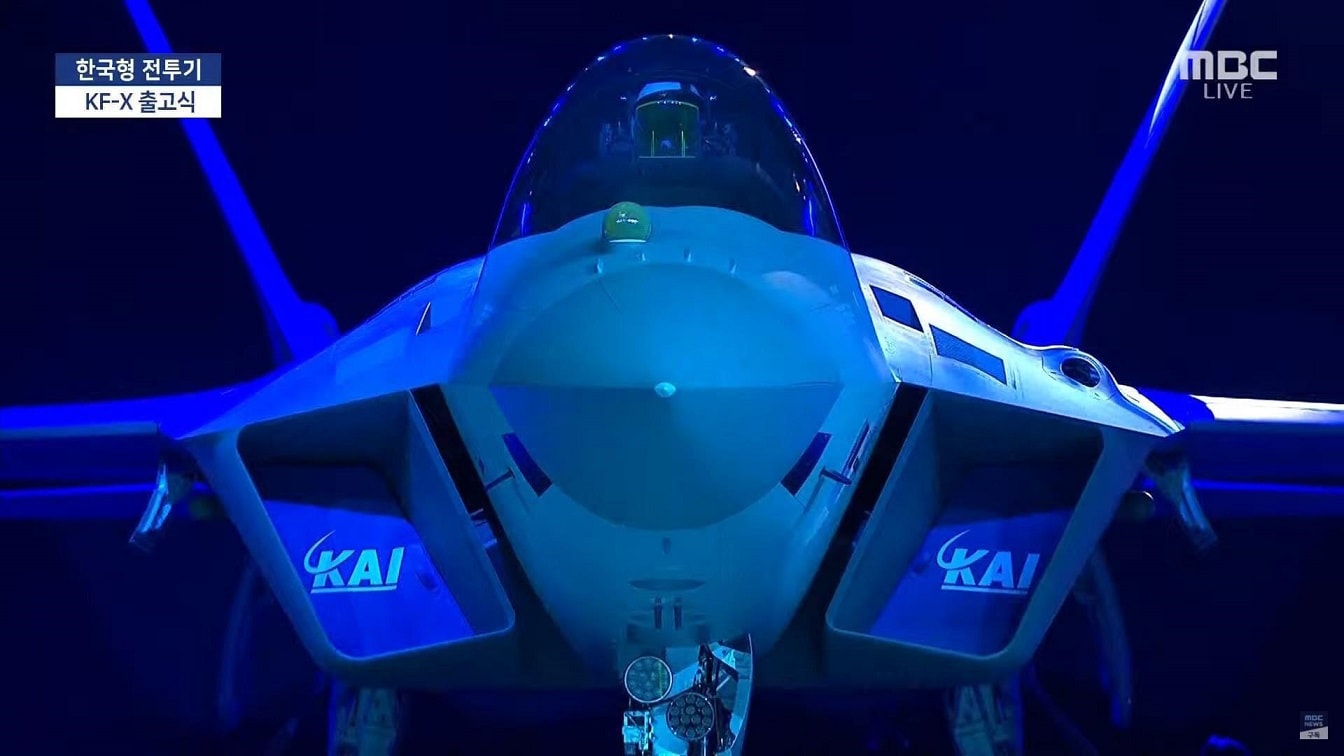South Korea Is Proud of Their New Stealth Fighter: Meet the KF-21 – The KF-21 Hawk fighter, South Korea’s own homegrown 4.5-generation warbird with some stealth characteristics, is looking quite promising. It sparked both of its engines in a successful first-time ground test ignition on June 27. It will soon take to the skies for its maiden flight later this summer, perhaps toward the end of July. Engineers have executed nearly all of its ground evaluations.
This is bad news for North Korea as the South Korean air force is fielding a warplane that is planned to penetrate and evade the North’s air defenses should conflict ever arise on the peninsula. At present, here is what we know about the KF-21 project:
Engines Are Coming Along Nicely
The engine test as noted above involved two General Electric F414 engines. This is the same power plant that serves the F/A-18 E/F Super Hornet. The testing of the F414 should mean thrust is sufficient to enable the KF-21 to knife through the skies.
The airplane comes in two models and six prototypes have been built.
The single-seater is known as the Boramae and the model with a co-pilot is the Hawk. They will conduct over 2,000 test flights before the KF-21 is declared ready for business.
Big Plans for the KF-21
It’s been a long time coming for the fighter as development has taken 11 years. South Korea wants 40 KF-21s by 2028 and hopes to have 120 in 2032. These will replace the F-5E / F Tiger and KF-16, South Korea’s version of the F-16. The KF-21 will fly along with F-35s already in the South Korean fleet.
Manufactured by Korean Aircraft Industries’ (KAI) plant in Sacheon, the KF-21 prototypes have different radar-absorbing coatings to evaluate the materials that will provide the most stealth attributes. Some stealth testing was performed last year.
Will Fulfill Many Different Kinds of Missions
KAI says the KF-21 is “a fighter aircraft developed to maintain the operational capability of the ROKAF and satisfy the future operation concept … as a multi-role fighter jet which features enhanced survivability, combined/joint operations, sustainment and logistics support system, air superiority, and ground precision strike.”
Runway Tests Are Next
The next stage of testing for the fighter will be conducted on the runway to determine how it reacts to the high speed before lift-off. Evaluation happens during the day and mechanical and avionics corrections take place at night so the airplane can be ready to go for another test in the next 24-hour block.
Altogether, testing could take another four years. But the engineers want the airplane to last 30 years, so they are focused on the details. The KF-21 has “100,000 holes for attaching more than 220,000 bolts and nuts,” according to AviaciOnline.
The KF-21 will be able to fly MACH 1.81 someday. It has a range of 1,800 miles – way more than enough to get to Pyongyang and back. Its dimensions are similar to the Super Hornet. The KF-21 will cost about $65 million each, but it is supposed to be cheaper than flying the F-35.
North Korean Air Force Is Struggling to Keep Up
The KF-21 and the F-35 will outclass the North Korean air force which has around 400 fighters but many of them are obsolete Soviet-era airplanes such as the MiG-17 relic and MiG-21 which was first developed in the 1950s. The South Koreans are pleased that they indigenously produced the entire KF-21 even though it had some help from Indonesia. The KF-21 has all the makings of a critical piece of military hardware for Seoul.
Plenty of testing remains but the warplane should give North Korean war planners headaches as it ponders how to keep up with the South Korean air force.
Now serving as 1945’s Defense and National Security Editor, Brent M. Eastwood, PhD, is the author of Humans, Machines, and Data: Future Trends in Warfare. He is an Emerging Threats expert and former U.S. Army Infantry officer. You can follow him on Twitter @BMEastwood.

